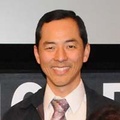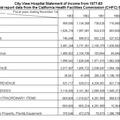Read Part 2 >>
ETHNIC HOSPITALS IN THE UNITED STATES
Many immigrant populations in the United States formed their own institutions. Perhaps these institutions helped to ease the impact of the new world, providing help via a shared language and culture. “La Societe Francaise de Bienfaisance Mutuelle de San Francisco, a benevolent society composed of French immigrants, established a mutual-aid hospital in 1851.”1 French hospitals also persist in Los Angeles and San Luis Obispo, California.
During the 1890’s in Florida, Spanish and Cuban immigrants formed “centros,” which were institutions providing a wide variety of welfare benefits, including health care. Two of these Centro’s acquired their own hospitals.2
In April of 1927,3 the Chinese hospital opened in San Francisco, offering maternity and general medical/surgical care to the Chinese community to the present.
The Japanese hospitals probably served the same function, as did the above hospitals. Yet in addition the Japanese immigrants and native-born in California faced a campaign of discrimination targeted at them, as elucidated by Roger Daniels in The Politics of Prejudice. Lacking space to treat this topic, we can gain some sense of the prevailing attitudes in California from an excerpt of the cover letter to the 1922 report California and the Oriental by the “State Board of Control of California”:
...the people of California are determined to repress a developing Japanese community within our midst. They are determined to exhaust every power in their keeping to maintain this State for its own people.4
With such attitudes prevailing at the highest levels of the State it is not surprising to hear about incidents of discrimination. Many Japanese immigrants had difficulty obtaining sympathetic medical care. The American-born Nisei medical school graduates were often excluded from internships at hospitals. I suspect that the Japanese physicians encountered barriers to obtaining privileges at various hospitals in California. The plight of the Japanese in California was thus similar to that of the Jewish immigrants along the East Coast, who formed their hospitals to provide a place for their sick to be treated sympathetically and for their youth to gain training in medicine.5
THE SPANISH INFLUENZA EPIDEMIC AND THE RISE OF JAPANESE HOSPITALS
In 1918, the influenza epidemic raged through California. In San Francisco, according to Alfred W. Crosby in Epidemic and Peace:
A disproportionate number of foreign born had died in the fall (Oct., 1918) wave. In absolute numbers of dead the Italians were hit the worst, the Irish next. The death rate among the Chinese and Japanese was normal, a patent impossibility. The flu and pneumonia deaths of these two groups were not reported as such or, possibly, were not reported at all.6
Stockton Hospital was constructed in 1919 with great support from the Japanese Stocktonians “as a result of unfortunate experiences during the influenza epidemic.”7
The Los Angeles Japanese-American community similarly experienced “unfortunate incidents,” finding themselves excluded from mainstream hospitals during the epidemic.8The community leaders there decided to expand a clinic run by Dr. Jyuhei Tanaka on Turner Street. Thus in 1918 the Japanese Hospital of Southern California was established.
Fresno had two Japanese-American hospitals soon after the end of the influenza epidemic. The first was called the Okonogi Sanitarium after its physician, Dr. B. Okonogi, and was reportedly the first Japanese hospital in the State of California. A separate facility, the Japan Hospital, was formed by a Dr. Murayama about the time of the epidemic. Dr. Hashiba started a third sanitarium there in 1922.
No information was readily available about the San Jose (Kuwabara Hospital) or Sacramento (Agnes Hospital) experiences during the influenza epidemic.
Information on the decline of the various hospitals is scant. Sacramento lost its large three story Japanese hospital during the depression: 1) through a lack of paying patients among the Japanese, blacks and Mexicans who used the facility; 2) through a refusal of white patients to use the facility. It was later used as the Grand Hotel and was destroyed by the redevelopment agency in the ‘60’s.
Dr. Hashiba in Fresno ran his first facility with eight beds in his converted residence from 1922-25, then rented an 18-bed capacity building (in his son’s name to circumvent the alien land law then in effect) from 1925-37. In 1937 he closed down his facility for financial reasons, although he continued to practice until his death in 1976.
Dr. B. Okonogi moved his facility to different sites in Fresno’s Japanese town. Starting with a small room in the basement, he eventually ran a 20-bed hospital. After World War II his son helped him maintain the hospital, but upon his death in 1950 the son closed it down. It was then operated as a convalescent home for a short time. Finally, the Danish creamery bought the property and converted the site into a parking lot. Only City View hospital outlasted it.
Kuwabara hospital’s building is presently used as a senior citizen center for the Issei. Stockton Hospital’s building still stands but is no longer operational. The original Southern California Japanese Hospital building on Turner Street was demolished to make way for the parking structure of the Parker Center.
Amid all these closings, City View Hospital managed to survive until the advent of the DRG’s.
Notes:
1. James A. Hamilton, Patterns of Hospital Ownership and Control (Minneapolis: Lund Press, 1961), p. 132.
2. Ibid., p. 133.
3. “Opening of Chinese Hospital,” San Francisco Chronicle, 30 April 1925
4. State Board of Control of California, California and the Oriental—Japanese, Chinese and Hindus (Sacramento, 1920), p. 9.
5. Hamilton, op. cit., p. 124.
6. Alfred W. Crosby, Jr., Epidemic and Peace, 1918 (Westport, Connecticut: Greenwood Press, 1976), p. 99.
7. Stockton Record, 12 April 1919, p. 12.
8. Hasegawa, op. cit., Book IV, p. I-39.
© 1986 Troy Tashiro Kaji




